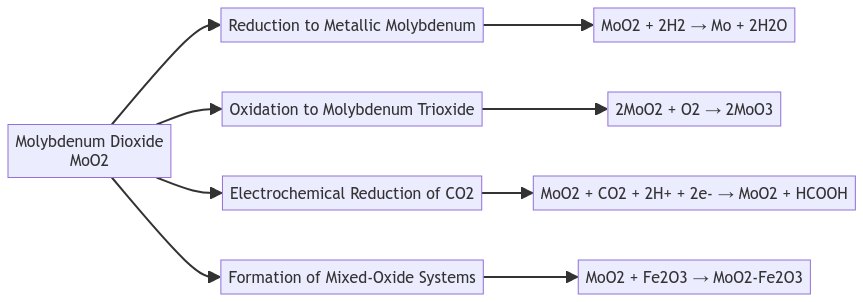
Figure 4. schematic representation of MoO2 chemical reactions
Reduction to Metallic Molybdenum
One important reaction of molybdenum dioxide (MoO2) is its reduction to metallic molybdenum. This reduction can be achieved by exposing MoO2 to reducing agents like hydrogen gas at elevated temperatures, typically around 400-800°C[1, 2]. The overall reaction can be represented as:
MoO2 + 2H2 → Mo + 2H2O
The reduction process involves the removal of oxygen atoms from the MoO2 lattice, leading to the formation of pure molybdenum metal. By controlling the reduction temperature, hydrogen flow rate, and reaction time, it is possible to tune the particle size and morphology of the resulting molybdenum[1]. The metallic molybdenum obtained from this reduction has catalytic properties and finds applications in various industrial processes, such as the synthesis of ammonia[1].
Oxidation to Molybdenum Trioxide
Molybdenum dioxide can also undergo oxidation reactions, particularly when exposed to oxidizing environments at high temperatures. One such reaction is the oxidation of MoO2 to molybdenum trioxide (MoO3) in the presence of air or oxygen[3, 4]:
2MoO2 + O2 → 2MoO3
This oxidation reaction is relevant in high-temperature applications where the stability of MoO2-based materials is crucial. The formation of MoO3 can lead to changes in the physical and chemical properties of the material, such as its electrical conductivity and catalytic activity[3, 4].
Electrochemical Reduction of CO2
Molybdenum dioxide has shown promise as an electrocatalyst for the reduction of carbon dioxide (CO2). When MoO2 films are deposited on conductive substrates and used as electrodes, they exhibit catalytic activity towards the electrochemical reduction of CO2 to valuable products like formate[5, 6]. The proposed reaction mechanism involves the adsorption of CO2 on the MoO2 surface, followed by electron transfer and proton-coupled reactions[5, 6].
The ability of MoO2 to catalyze CO2 reduction is attributed to its unique electronic structure and the presence of active sites on its surface[5]. This reaction holds great potential for the sustainable conversion of CO2 into useful chemicals and fuels, contributing to the mitigation of greenhouse gas emissions[6].
Formation of Mixed-Oxide Systems
Molybdenum dioxide can interact with other metal oxides to form mixed-oxide systems with interesting properties. For example, MoO2-Fe2O3 (molybdenum dioxide-hematite) nanoparticle systems have been synthesized through mechanochemical activation[7, 8]. These mixed-oxide systems exhibit unique magnetic properties, such as unidirectional magnetic anisotropy, which can be exploited in various applications[7, 8].
The formation of mixed-oxide systems involving MoO2 can lead to synergistic effects and enhanced properties compared to the individual components. The interaction between MoO2 and other metal oxides can modify the electronic structure, surface chemistry, and catalytic activity of the resulting material[7, 8].
References
- Zoller, M., M. O’Sullivan, and H. Huppertz, On the Reduction of MoO(3) to MoO(2) : A Path to Control the Particle Size and Morphology.Chemistry, 2021. 27(72): p. 18141-18149.
- Gadiyar, H.S. and J. Balachandra, VAPOUR PHASE DEPOSITION OF MOLYBDENUM ON URANIUM DIOXIDE PARTICLES USING FLUIDIZED BED TECHNIQUE.Transactions of The Indian Institute of Metals, 1962.
- Manea, A. and A.V. Moholkara. Palladium (Pd) sensitized molybdenum trioxide (MoO 3 ) nanobelts for nitrogen dioxide (NO 2 ) gas detection. 2021.
- Zhang, C., et al., Atomic Layers of MoO(2) with Exposed High-Energy (010) Facets for Efficient Oxygen Reduction.Small, 2018. 14(13): p. e1703960.
- Asadi, M., et al., Robust carbon dioxide reduction on molybdenum disulphide edges.Nat Commun, 2014. 5: p. 4470.
- Maia, L.B., et al., Reduction of Carbon Dioxide by a Molybdenum-Containing Formate Dehydrogenase: A Kinetic and Mechanistic Study.J Am Chem Soc, 2016. 138(28): p. 8834-46.
- Kostomarov, D.V., V.A.y. Fedorov, and E.V. Antonov, Mechanisms of Interaction of Molybdenum and Tungsten Polyoxide with Aluminum Oxide Melt under Reducing Conditions.Crystallography Reports, 2018. 63: p. 682-688.
- Kostomarov, D.V., V.A.y. Fedorov, and E.V. Antonov, Mechanisms of Interaction of Molybdenum and Tungsten Polyoxide with Aluminum Oxide Melt under Reducing Conditions.Crystallography Reports, 2018. 63: p. 682 – 688.
